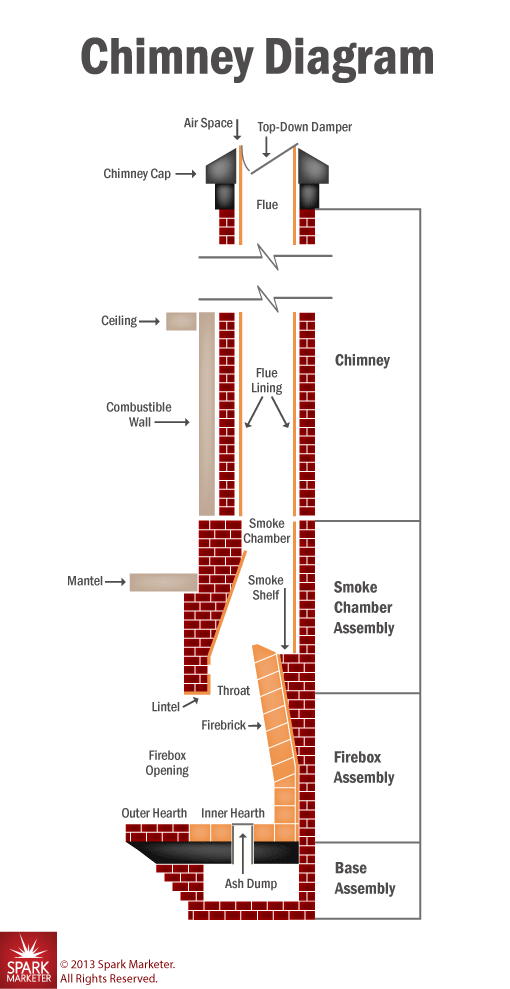One of the most important components of your chimney and venting system, a damper is essential for proper ventilation of smoke and other byproducts of combustion out of your home. Serving the same purpose as a window, a opened damper allows air to flow out through the chimney. When the damper is closed, it keeps warm air inside the fireplace and your house. Of course, you should always open your damper when you have a fire burning, but when your fireplace is not in use, your damper should be closed to keep warm air out and cool air in your house during the summer and cold air out and hot air in your home during the winter. If your damper is old and worn out, it should be repaired or replaced as soon as possible to keep your home energy-efficient. The Mad Hatter would like to tell you more about the two different types of dampers and how we can assist you when it is time for a new damper in your chimney.
Throat Dampers
Located at the bottom of your chimney (or the throat) directly above your firebox, throat dampers are typically found in old masonry chimneys. Made of steel, stainless steel, or cast-iron, a throat damper rests on tracks above your fireplace. A handle operates this type of damper by moving it along its tracks to open and close the damper. Some prefabricated chimneys also have throat dampers; however, these steel dampers are often shaped as a square or circle and are opened and closed with a pull-down handle or a left-to-right lever. Newer throat dampers are inflatable devices that seal off the flue to any extraneous air that comes down the chimney. To be sure you have the best sealant, you should get the correct size for your inner chimney walls. Some disadvantages to this type of damper are they can be punctured, are not the most energy-efficient, and do not protect your chimney from birds and animals nesting inside your chimney.
Top-Mount Dampers
If your old throat damper is beyond repairing, The Mad Hatter recommends you install a top-mount damper, which sits on top of your chimney and also serves as a chimney cap. Extremely energy-efficient, a top-mount damper is equipped with a silicone rubber gasket that provides an air-tight seal. Made from iron or steel, a top-mount damper functions well as a chimney cap when closed. This type of damper will protect your inner chimney from water penetration, debris, and bird and animal invasions. More expensive than a throat damper, a top-mount damper will end up saving you money on your heating and cooling bills as well as costly repairs to your chimney caused by water leaks or nesting animals. Easily operated, a stainless steel cable runs down your chimney to the firebox, and you simply pull on the cable to both open and close the damper.
Have more questions about these two different types of dampers? Contact The Mad Hatter to speak to our staff about both of these damper types.

